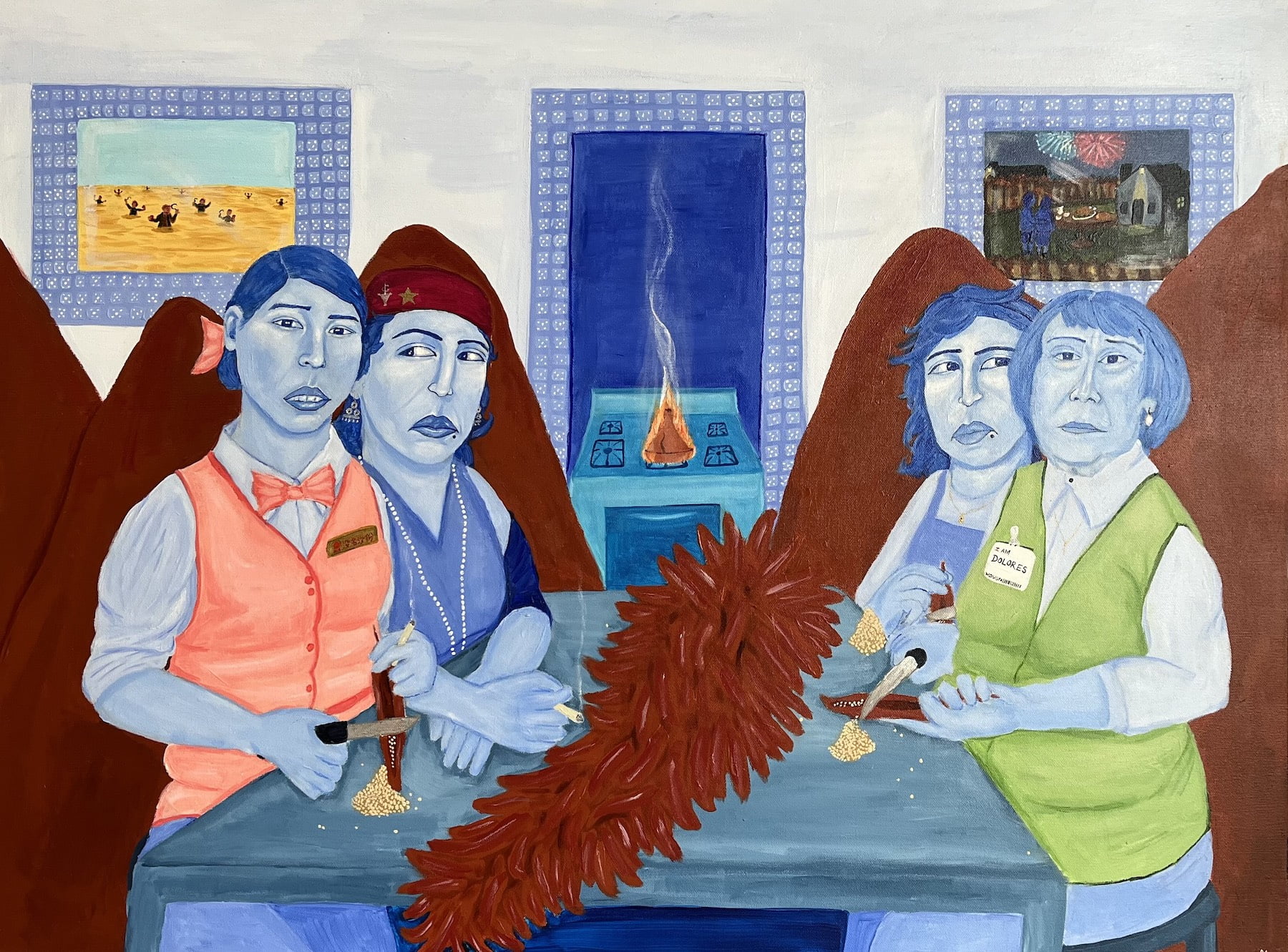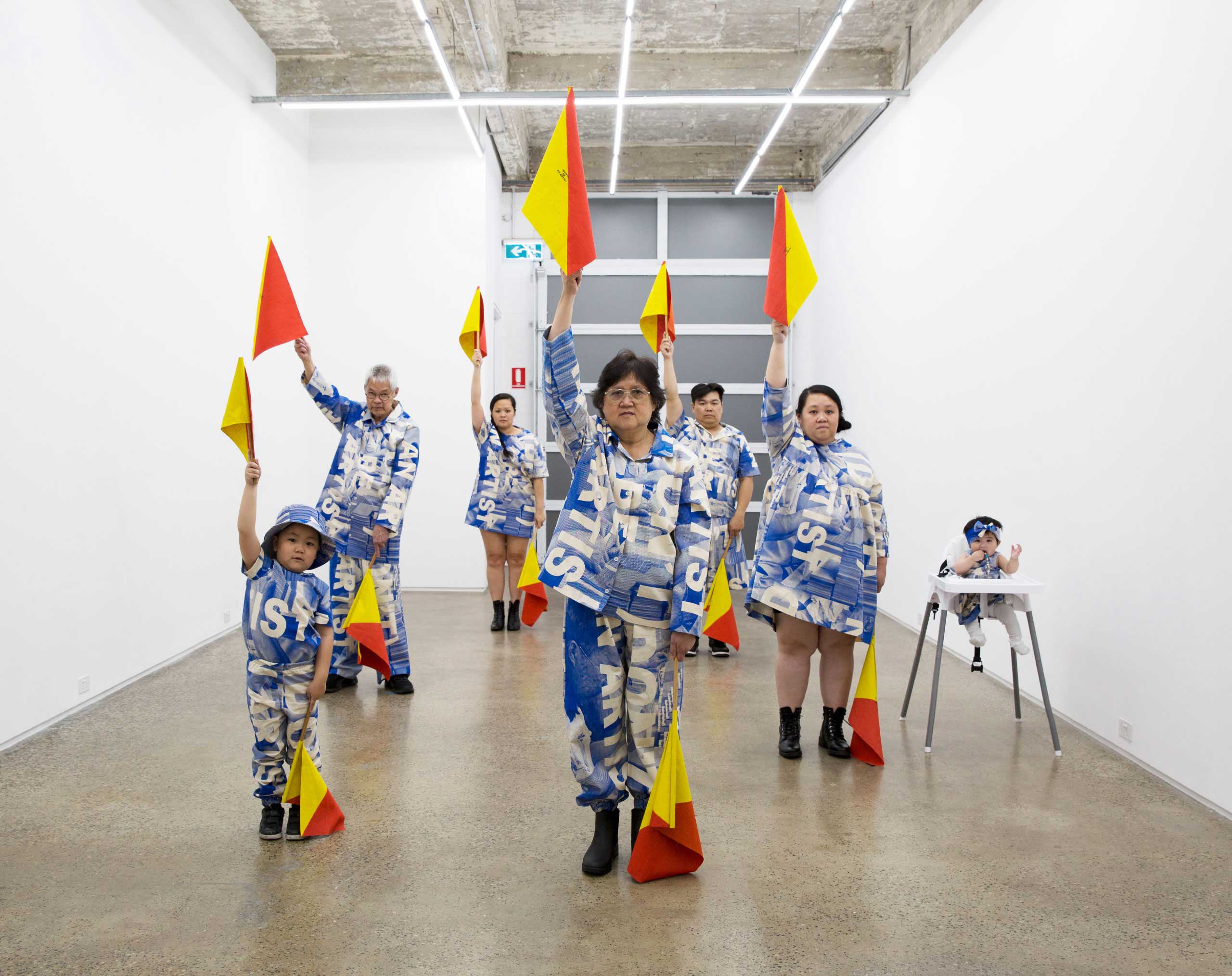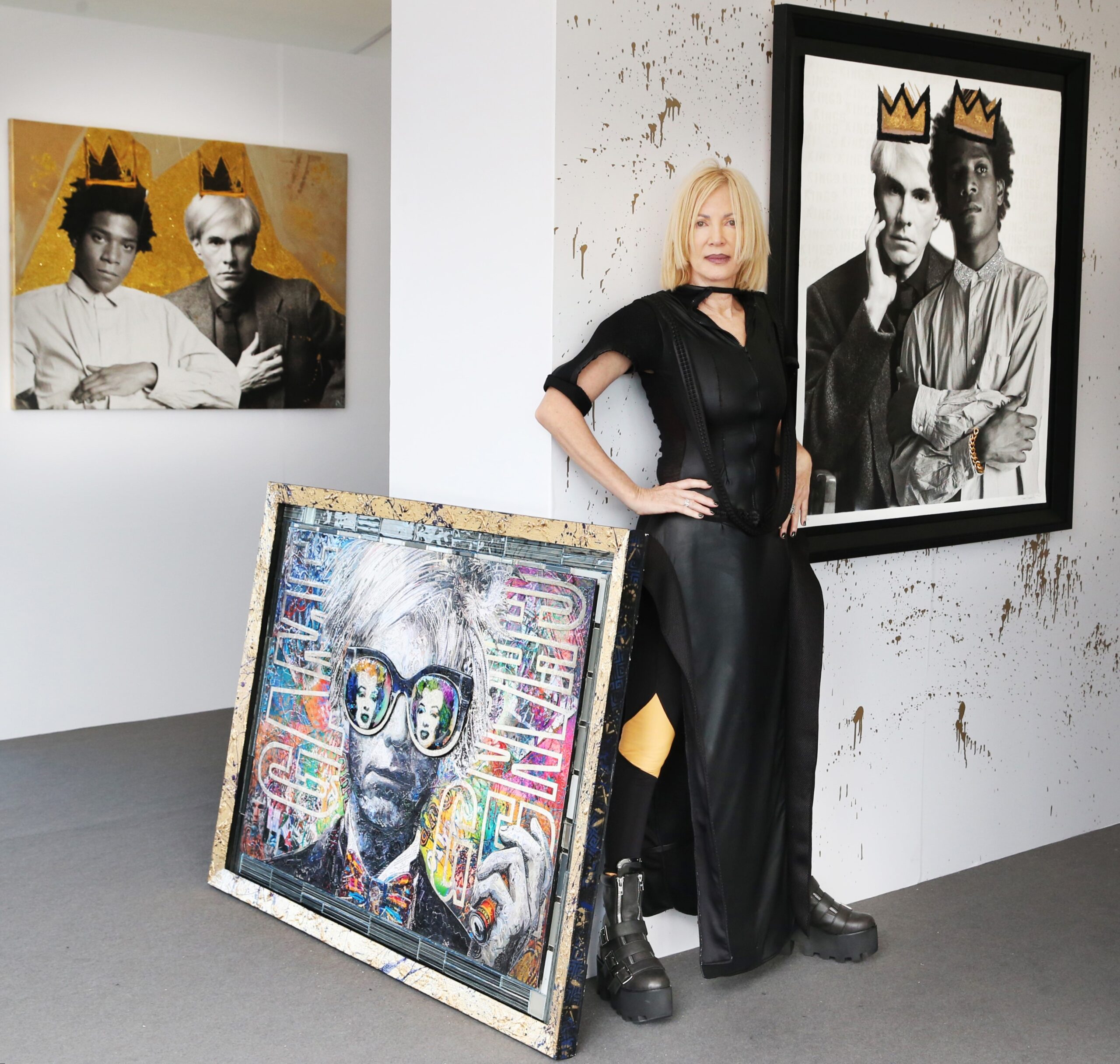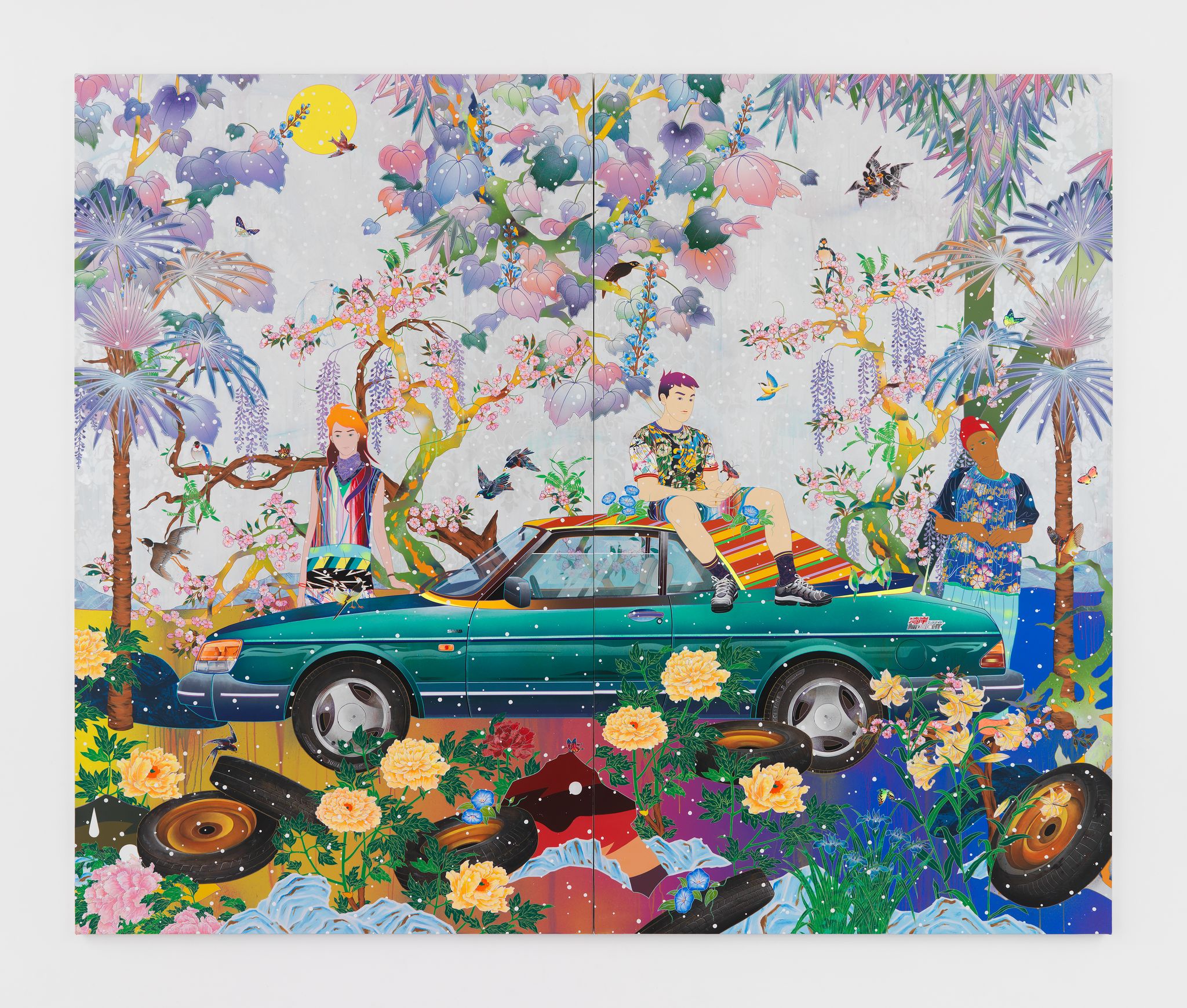
Tomokazu Matsuyama – Episodes Far from Home
Born in Takayama in 1976, raised between Japan and California, and currently based in Greenpoint, New York, Tomokazu Matsuyama has made his diasporic identity the driving force of a borderless creative output.
Merging elements from Eastern and Western art traditions, Tomokazu’s oeuvre perfectly epitomizes the cultural hybridity of our societies that challenges notions of national and individual identities, while reflecting the artist’s personal trajectory as a citizen of the world.
On display at Almine Rech, London, until 20 May, his richly detailed paintings and elaborate sculptures draw on a wide and diverse range of sources – from Pop Art, graffiti and the work of British designer William Morris, to Meiji-era prints, Edo-period art and the Kanō School.
With their compositional arrangement inspired by the pastoral genre and Grand Manner portraiture, Tomokazu’s paintings retain a distinctive graphic quality that flawlessly harmonize with their use of skewed perspective and absence of shading borrowed from traditional Japanese woodblock prints.
As with the paintings, Matsuyama’s hyper-coloured, eye-popping sculptures encompass a variety of different inspirations – from textile patterns to fashion magazines and manga comics – while offering a plastic visualisation of the artist’s own eclectic approach to art-making.
1883 Arts Editor sat down for a chat with Tomokazu Matsuyama to discuss his work, influences and future endeavours.
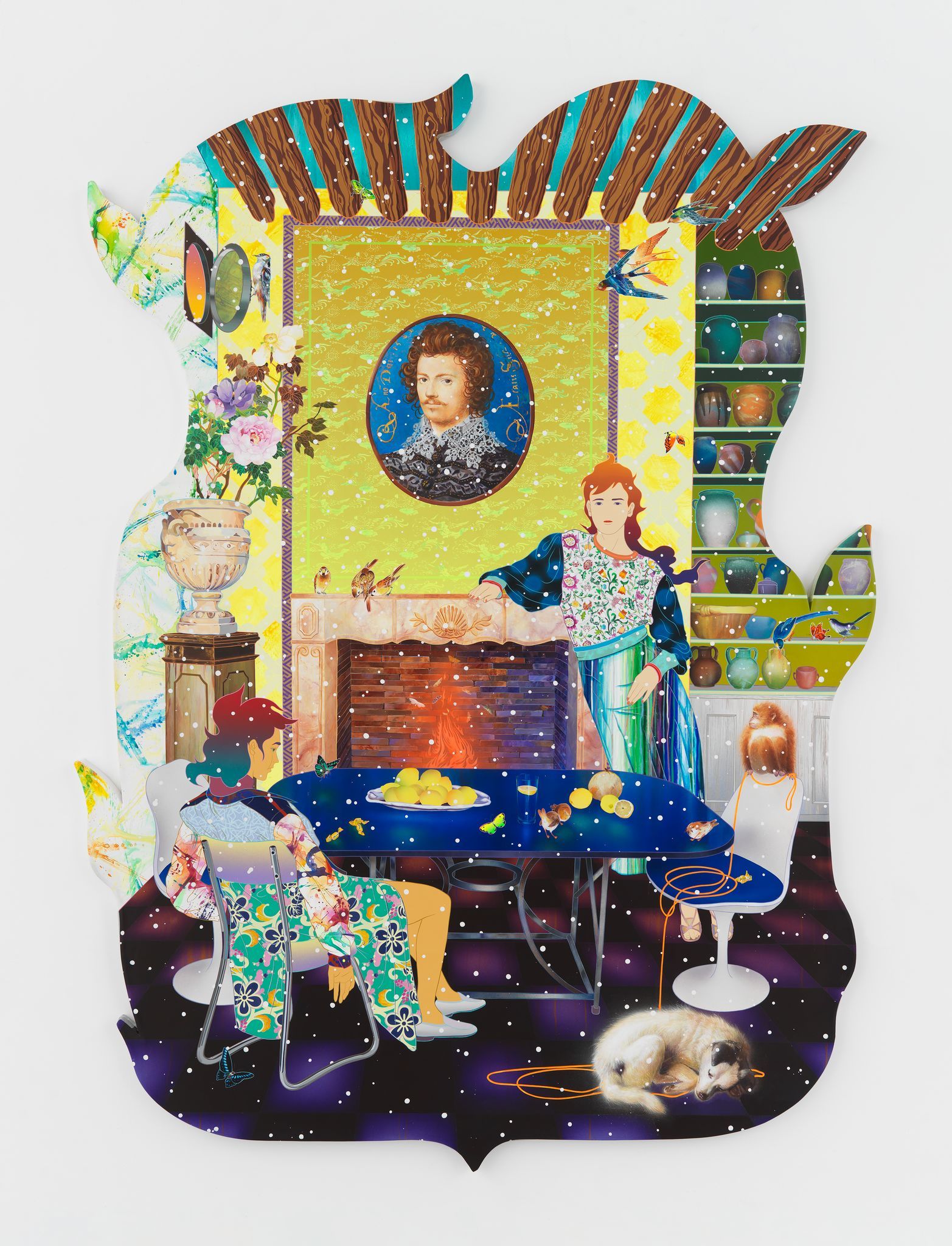 Tomokazu Matsuyama, Winter Song Solitudes, 2023 – Acrylic and mixed media on canvas – 190.0 x 261.4 cm / © Tomokazu Matsuyama – Courtesy of the Artist and Almine Rech – Photo: Matt Grubb
Tomokazu Matsuyama, Winter Song Solitudes, 2023 – Acrylic and mixed media on canvas – 190.0 x 261.4 cm / © Tomokazu Matsuyama – Courtesy of the Artist and Almine Rech – Photo: Matt Grubb
Thank you for agreeing to the interview.
Can you tell us about your first encounter with art?
I grew up in a mountain town in central Honshu called Takayama. Back in the late 70s, early 80s, when I was a little boy, there wasn’t much to do, so kids would gather around temples to play hide-and-seek or to catch beetles.
When I was in first grade, the first Nintendo console came out, and that was a real game changer. It worked as catalyst for friendship, if you like, as it provided children with a new way to connect and socialise, and it really caught my creative imagination, leaving a lasting impression on me.
Nature had a great influence on me growing up as well. The natural world is a central theme of Japanese art and culture; it is both an aesthetic and ethical concept that is very much embedded in my artistic sensibility.
At the age of eight, you moved to California. What was it like adapting to life in the US?
I moved to Orange County in around 1985, and it goes without saying it was a bit of a cultural shock for me.
However quite unexpectedly, in Southern California I found an accepting and diverse community of people from different cultures and backgrounds – including many Asians – and that made me feel less alone and isolated, and eventually helped me adjust to my new American life.
The real problems began when we had to move back to Japan, after three and a half years in the US. That was when I really had a full identity crisis. Ultimately, going back to my home country proved to be ten times more difficult than relocating to the States.
And how do you think the experience shaped you as a person and as an artist?
As I was saying, when I got back to Japan from the US, I didn’t feel like I belonged there, and this sense of displacement has definitely shaped my creative trajectory.
As an artist, I want my work to speak to audiences of diverse backgrounds and life experiences. I want it to help them understand themselves, and I believe this can only be achieved by drawing from what I have experienced first hand.
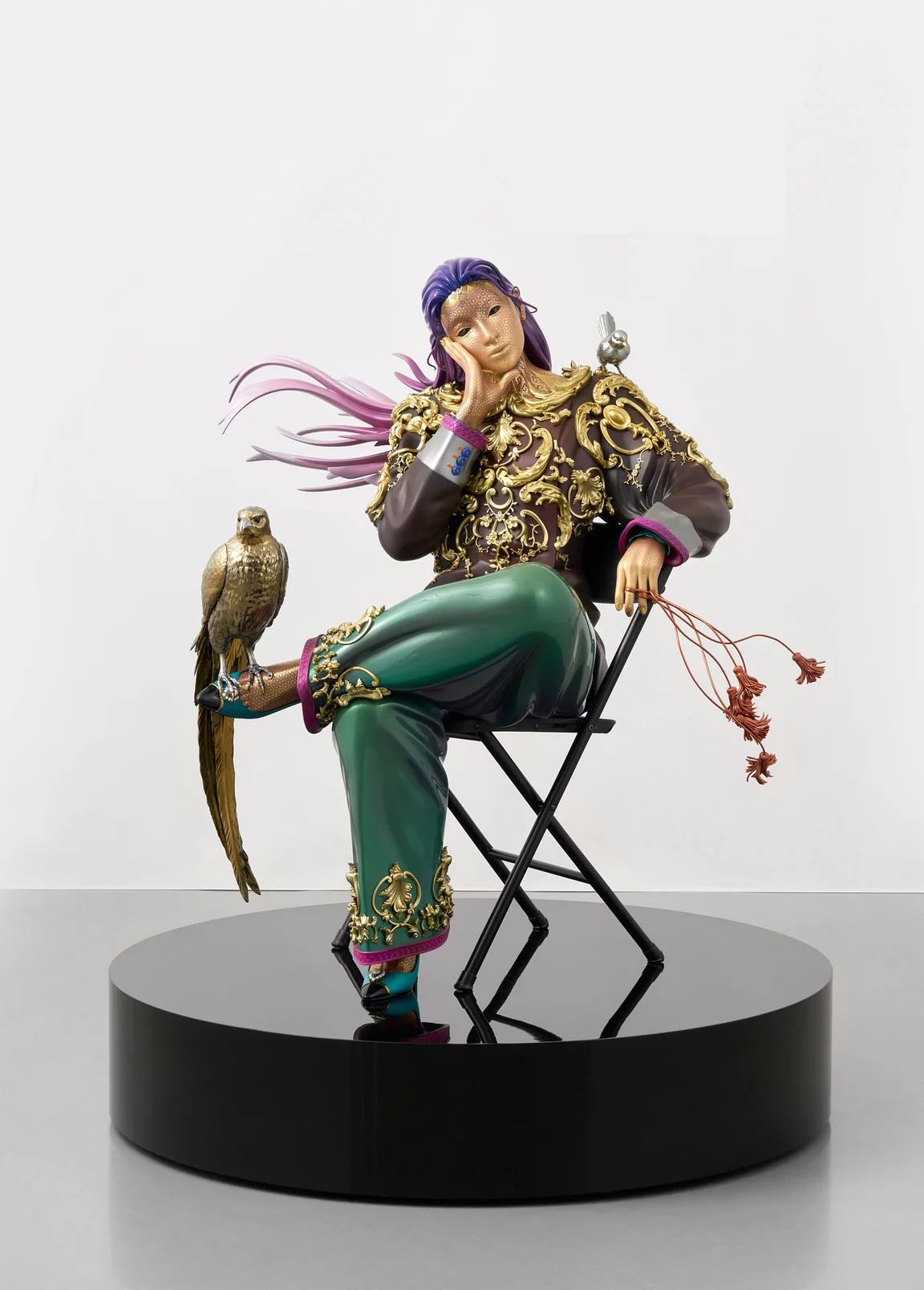 Tomokazu Matsuyama, This is What It Feels Like, 2023, hand painted FBR, steel, folding chair H 120 x W 110 x D 110 cm
Tomokazu Matsuyama, This is What It Feels Like, 2023, hand painted FBR, steel, folding chair H 120 x W 110 x D 110 cm
How did you become interested in pursuing a career as an artist?
I would say that my career as an artist is more the result of a transition than a conscious decision.
I came to New York when I was 24/25 to do something creative. Having a degree in business management, I thought graphic design could be the right path for me.
However I very soon realised it wasn’t actually my thing. Having to deal with clients means you cannot really make all the creative decisions. And that was what put me off.
That is when I fully embraced my creative side. I found a rather inexpensive studio in Brooklyn, and finally transitioned into art-making.
Traditional Japanese art is an underlying thread in your oeuvre; from where else do you find inspiration for your work?
My interest lies in the mutual contamination of different cultural elements and traditions.
There is, undoubtedly, a distinct “Japanese quality” to my work. However, I also draw from American, consumer and pop culture, as well as from architectural decorative patterns and textile design, from the Arts and Craft Movement and European art, all mixed together.
American cartoons also represent a source of inspiration, colour-wise.
 Tomokazu Matsuyama
Tomokazu Matsuyama
Out of curiosity, have you found any difference between how your work is received in the US and Europe compared to Japan?
Of course! I’ll be honest with you, I’m definitely more appreciated in America and the EU than I am in Japan. My home-country seems to be having the hardest time trying to pigeonhole me. It’s probably because I speak under a global language.
You know, there are exceptional contemporary Japanese artists whose art beautifully encapsulates various aspects of the country’s culture. I’m thinking of Takashi Murakami, whose work is deeply influenced by the Otaku subculture. Or Yoshitomo Nara, who draws on the melancholic side of Japanese culture.
They are great, but I don’t speak in their language, because I wasn’t brought up in Japan. My work is very much about trying to find a “grey zone”. It’s not about black and white, East and West, bright and dark. What I want to represent is what it means to be in-between cultures, and somewhat torn, if you will, between two worlds.
As a final question, what has the rest of 2023 got in store for you?
Usually, after a big exhibition like this one with Almine Rech Gallery, I’d have some creative downtime to recharge, but not this time.
I have got a few museum exhibitions coming up, including a large-scale public art installation in London. It will be in autumn 2023, but I can’t disclose details at the moment. I also have a few public art opportunities in Asia and in New York.
So I’ve definitely got some busy months ahead of me. But I can’t complain really, this is what I signed up for.
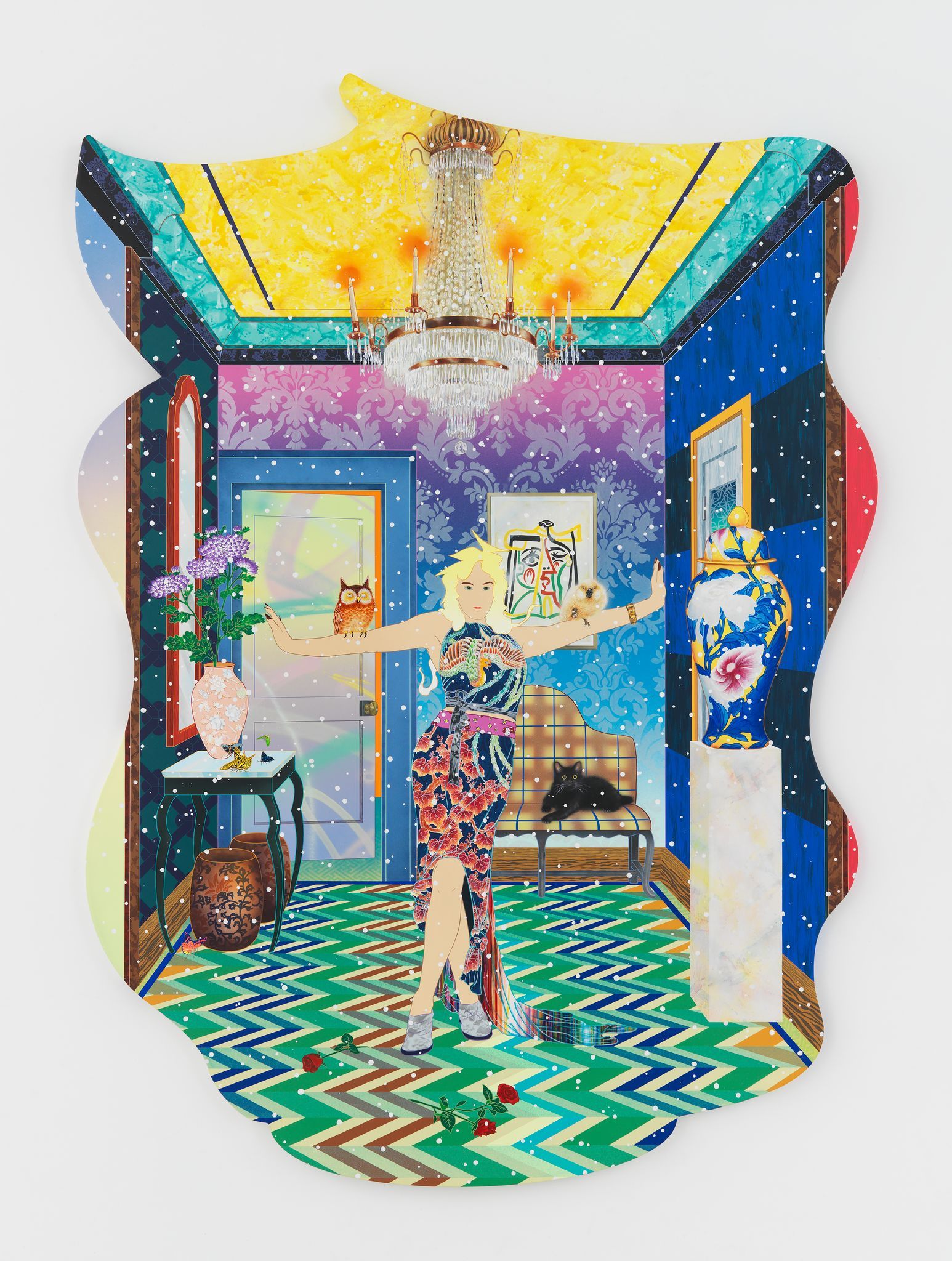 Tomokazu Matsuyama, The Letter Half Awake, 2023 – Acrylic and mixed media on canvas – 269.2 x 194.1 cm, 106 x W76.4 in / © Tomokazu Matsuyama – Courtesy of the Artist and Almine Rech – Photo: Matt Grubb
Tomokazu Matsuyama, The Letter Half Awake, 2023 – Acrylic and mixed media on canvas – 269.2 x 194.1 cm, 106 x W76.4 in / © Tomokazu Matsuyama – Courtesy of the Artist and Almine Rech – Photo: Matt Grubb
Tomokazu Matsuyama Episodes Far from Home will be running at Almine Rech, London, until 20 May.
Featured Image: Tomokazu Matsuyama, By And By Daylight, 2023 – Acrylic and mixed media on canvas – 254 x 305 cm, 100 x 120 in / © Tomokazu Matsuyama – Courtesy of the Artist and Almine Rech – Photo: Matt Grubb
Words and interview by Jacopo Nuvolari



